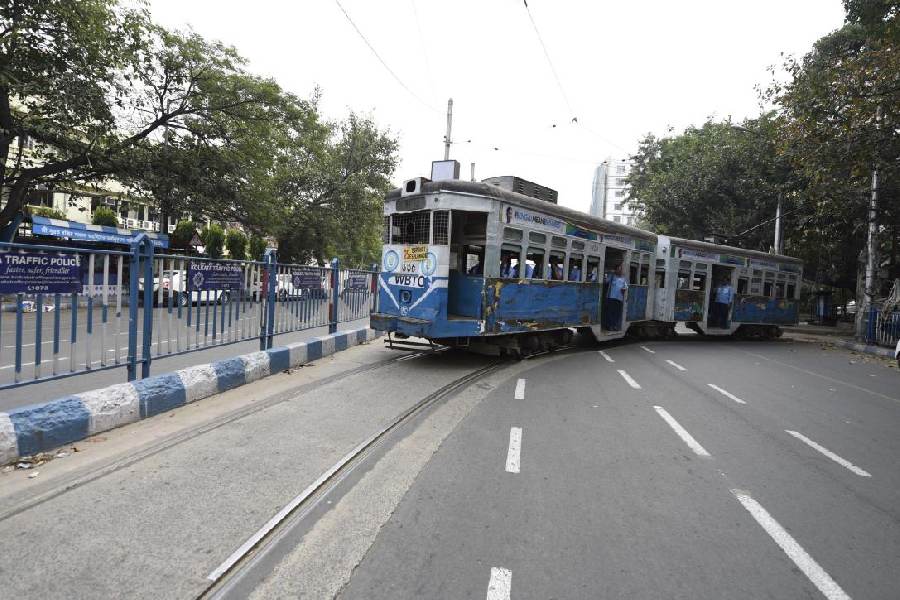Trams should be seen as a transport of utility and not merely as a piece of heritage, an urban planner, who is also a member of a Calcutta High Court-appointed committee to preserve trams, said on Wednesday.
The fate of trams is being determined by bureaucrats without involving transport policy planners, said Dipankar Sinha, a former head of the town planning department of the Kolkata Municipal Corporation (CMC). “Trams are not just a piece of heritage. They should be seen as a transport of utility.”
A group of Kolkatans — a filmmaker, a green activist, an advocate of trams and a politician — came together to speak up for preserving trams in Kolkata.
Ajay Mittal, the green activist, said Kolkata’s traffic management was only focused on managing the movement of cars.
“A day will come when the road space will not be enough to accommodate cars even after removing trams. We have to move people and not only cars,” Mittal told a news conference on Wednesday.
The speakers cited the instances of stopping trams on Rabindra Sarani and Bentinck Street. “Stopping trams has not been able to reduce snarls on these roads. If you keep adding cars and target trams, a day will come when the roads will have no space to carry cars.”
Sinha, also a council member of the Institute of Town Planners, said: “Decisions on trams are being taken in a bureaucratic fashion. Transport policy-makers, planners and the will of common people must be taken into account.”
Filmmaker Goutam Ghose, CPM state secretary Mohammad Salim and Debasish Bhattacharyya, one of the founders of the Kolkata Tram Users Association and a member of the court-appointed committee, also addressed the news conference.
In August, a division bench of the high court, headed by Chief Justice T.S. Sivagnanam, formed an advisory committee that would work to preserve trams in Kolkata.
Earlier this month, the bench told the state that the committee was “constituted for the purpose of ensuring restoration of the tram services and not otherwise”.
The order also mentioned that there were objections from the police about running trams. “What we gather is that Kolkata Police are objecting to the tram services being operated in all the routes on the ground that the trams are very slow and cause traffic congestion on the road,” the order says.
Ghose said he was appealing to the chief minister to preserve trams.
“She has helped indigenous art and craft in many ways. I am also appealing to her to save trams because trams form a part of Kolkata’s identity.”
Many of the speakers kept referring to comments made by Kolkata’s mayor Firhad Hakim, who had earlier said it was not possible to run trams on more than four routes. Hakim had in August told the civic house that the CMC had told the state transport department that trams should be running on only four routes.
At present, trams run on three routes — 24/29 (Tollygunge-Ballygunge), 25 (Gariahat-Esplanade) and 5 (Shyambazar-Esplanade).
Hakim, who is also the urban development minister, said recently that the state wanted to restore the Kidderpore-Esplanade route, which was shut down in May 2020 after Cyclone Amphan snapped overhead cables that supplied power to the tramcars.
Sinha said trams are a “living heritage”.
“The main utility of trams is to transport people. If the number of routes is cut down, trams’ ability to transport people gets reduced. So that would be the exact opposite of conservation of trams.”
Trams are not slow, Sinha said, contradicting the reason put forward by those who want a reduced tram network in Calcutta. Trams are a disciplined mode of transport, they move on a single track, unlike others who keep changing lanes every now and then.
Mittal spoke about how cycling was looked down upon by some people. “Those riding a bicycle to work are considered economic failures. So I bought myself a fancy helmet. That day, I turned into a cyclist from a cycle-wallah,” he said.






